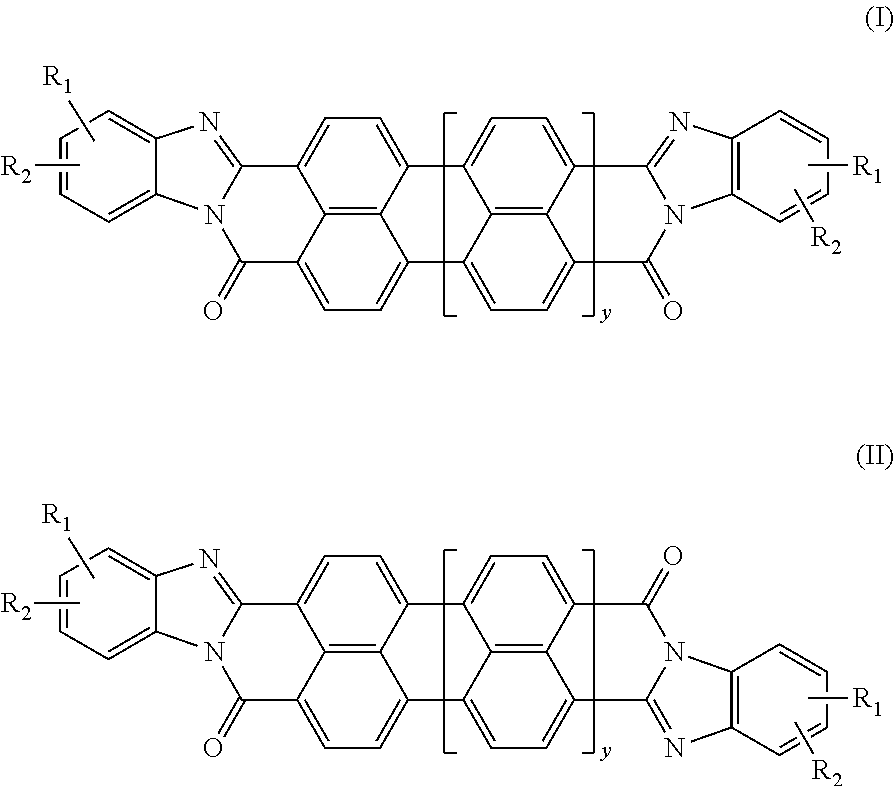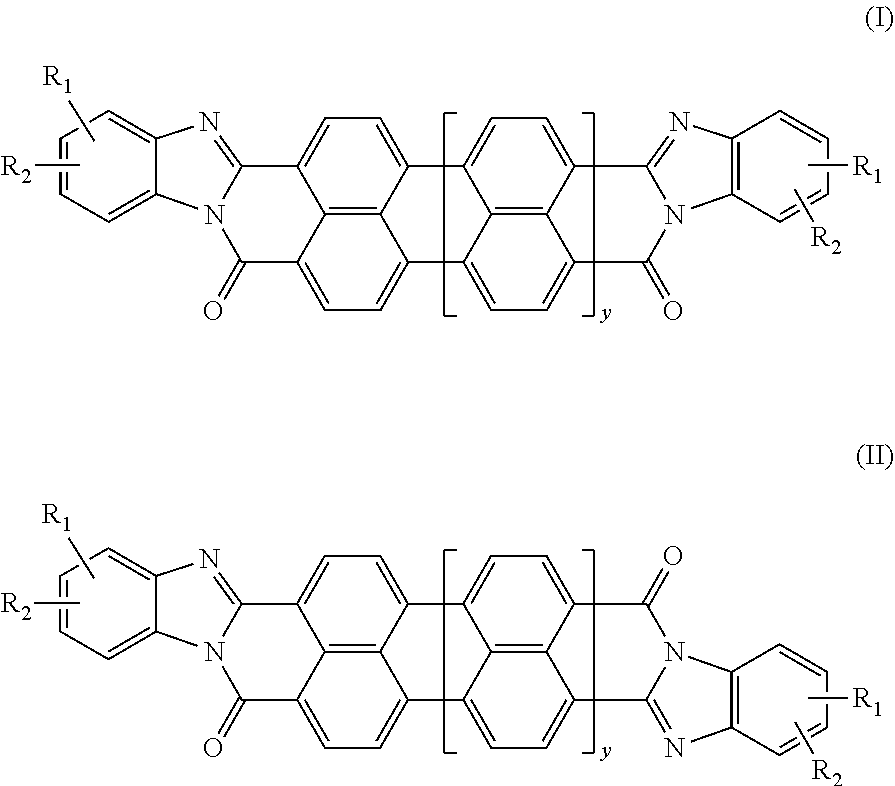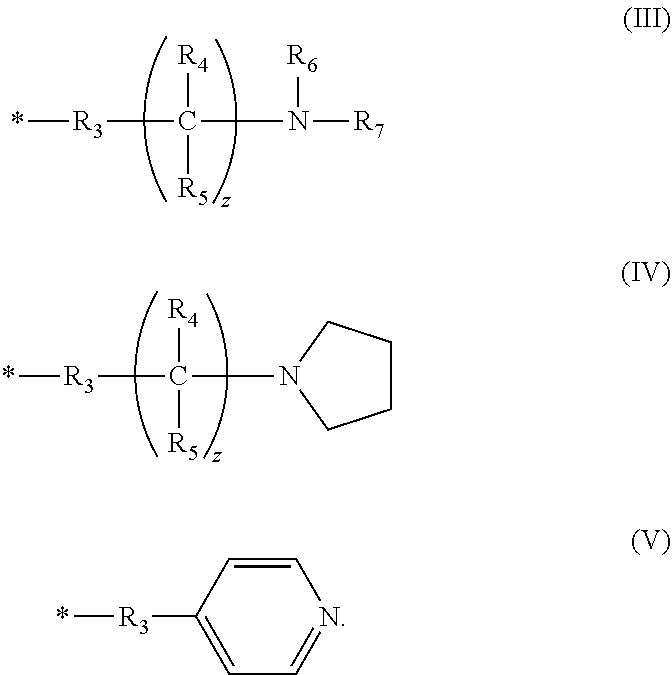Lyotropic liquid crystal systems based on aromatic tetracarboxylic bisbenzoimidazole derivatives and methods for making
a liquid crystal system and aromatic tetracarboxylic bisbenzoimidazole technology, applied in the field of organic chemistry and optical anisotropic coatings, can solve the problems of limiting the application of thermotropic lc films, affecting the thermal stability of pva-based films, and affecting the effect of polarization
- Summary
- Abstract
- Description
- Claims
- Application Information
AI Technical Summary
Benefits of technology
Problems solved by technology
Method used
Image
Examples
example 1
Synthesis
Synthesis of Compounds of Formulae (I) and (VI)
[0075]The following general synthetic scheme (Scheme 1) illustrates a synthetic process by which compounds of formulae (I) and (VI) can be made. However, those having ordinary skill in the art, guided by the disclosure herein, will understand that a similar synthesis can be used to make the trans compounds according to formulae (II) and (VII).
[0076]R in Scheme 1 can vary in the synthesis of the compounds described below. For example, in Compound 1, R is —CH2CH2OCH2CH2OCH2CH2CH2SO3H.
[0077]Synthesis of Compound 1: A mixture of perylene-3,4,9,10-tetracarboxylic dianhydride, an o-phenyldiamine derivative with R as CH2CH2OCH2CH2OCH2CH2CH2SO3H, and piperazine were added into a stirred melt of phenol at about 70° C. to about 80° C. The mole ratio of the perylene-3,4,9,10-tetracarboxylic dianhydride to o-phenyldiamine derivative to piperazine to phenol was about 1:2.3:3:50. The mixture was heated to a temperature ranging from about 170...
example 2
Measurement of Dichroic Ratios
[0096]Sample 1 was prepared by dissolving 150 mg of Compound 1 in 10 mL of deionized water, titrating with 5% triethylamine solution to pH=7 and concentrating to 12 wt % using a rotavaporator. The resulting solution was coated onto a standard glass slide (2 inches by 3 inches by 1 mm, previously washed with 1% alcohol solution in an ultrasonic tank for 20 minutes and later rinsed with deionized water, isopropyl alcohol and dried in room temperature) with an applicator rod (⅜ inch in diameter, #2½ wire size, Paul N. Gardner Co. Inc.) at a linear velocity of 25 mm / s. The resulting film thickness was approximately 0.2 μm. The process was conducted at room temperature (˜20° C.) and relative humidity of 65% after the film was dried under the same condition.
[0097]The film was characterized by absorbance spectra measured on a Perkin Elmer Lamda Bio 40 UV / Vis Spectrum spectrophotometer in a wavelength range from 380 to 800 nm using a light beam polarized along ...
PUM
| Property | Measurement | Unit |
|---|---|---|
| temperature | aaaaa | aaaaa |
| wavelength | aaaaa | aaaaa |
| wavelength | aaaaa | aaaaa |
Abstract
Description
Claims
Application Information
 Login to View More
Login to View More - R&D
- Intellectual Property
- Life Sciences
- Materials
- Tech Scout
- Unparalleled Data Quality
- Higher Quality Content
- 60% Fewer Hallucinations
Browse by: Latest US Patents, China's latest patents, Technical Efficacy Thesaurus, Application Domain, Technology Topic, Popular Technical Reports.
© 2025 PatSnap. All rights reserved.Legal|Privacy policy|Modern Slavery Act Transparency Statement|Sitemap|About US| Contact US: help@patsnap.com



